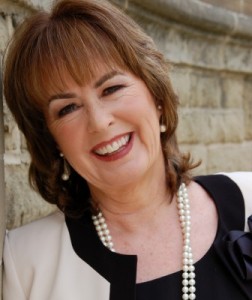New York Times bestselling author dishes on the dramatic changes in the publishing industry
I always considered myself to be the walking, talking success story of American publishing. I’m a lawyer, and at age 40, I had two babies back to back. Suddenly, I was a stay-at-home mom and trying to figure out how to replace the income I relinquished due to this life change.
I decided to start writing novels. I didn’t know anything about writing books or about the publishing industry. I simply forged ahead, armed with a steely determination that I would figure it out and prosper in a big way.
After four years of trying, and seven finished manuscripts, I finally sold my first novel. Over the next decade, I went on to write 28 books for four major New York publishing houses. Along the way, I became a Waldenbooks, USA Today, and New York Times bestselling author.
But it came at a price. I wore out my wrists and neck. I now suffer from several stress-related conditions, and I nearly bankrupted by family by suffering through the financial ups and downs that come with an artistic career. It was almost a relief when, at the end of 2009, my last publisher dropped me, and I decided to quit writing.
For almost a year and a half, I shut down my webpage and turned off my email. I didn’t think I would miss writing, but such an intense artistic enterprise has a way of embedding itself into your DNA.
A friend began nagging at me to try again, and after months of listening to his harangue, I finally relented and agreed to start over one more time. However, during my hiatus, the industry I knew and understood, where I had once worked so intensely, had vanished.
Books are an impulse purchase, made when people have extra money to spend. With the crash of the economy in 2008, the publishing industry began to implode. People stopped buying books. At the publishing companies, there were massive layoffs, more mergers and consolidations, and it was a virtual bloodbath for authors.
The big book chains—that used to order 8 weeks of stock—began to order 2 weeks instead. In response, the companies slashed their print runs, so even if an author had a book published, its shelf life flitted by in the blink of an eye. Reprints of old titles became the norm; it’s much cheaper to republish an old book than to lay out the expense for a new one.
The “star” authors continued to write for the big companies, but many of the mid-list and low-list authors were dumped. Borders finally filed for bankruptcy and will liquidate. Barnes and Noble stores—if you’re lucky enough to still have one in your town—have shelves that look empty.
The authors who lost their spots with the NY publishing houses turned to e-books. Their decisions to self-publish were made easier by the advent of functional e-book devices such as Kindle and Nook.
As I jumped into these turbulent waters, I quickly saw that there was no way for me to sell a manuscript to a NY print publisher. There are only a handful of companies that publish paperbacks, and I had written for 4 of them. The others had never been interested in signing me. So NY was off the table. What was I to do? And how was I to do it?
Even though I didn’t want to begin self-publishing, I decided to try e-books. I had been suffering from the opinion shared by many readers that e-books aren’t “real” books. But I eventually realized that I was fussing like an old dinosaur. I didn’t want to learn “new” things. I didn’t want to start over in a new and scary world where all the rules had changed.
But I forged ahead and figured it out. My first two e-books were posted on-line in June, and with their release, I sent out an announcement to my email fan list.
In reply, I received many happy letters from fans who already own e-readers and who were excited to read the new books. But I was surprised and saddened to receive dozens of really angry letters from avid readers who were upset about my switch to e-books. Many people said that I had “sold out” as a writer.
The division seemed to be age-based. Younger readers told me they loved their electronic readers and were excited to see me embrace the new technology. Older readers, who love their print books, were incensed and offended by the entire notion of e-books. One reader asked, “If we continue down this road, what will happen to libraries?”
What indeed?
I didn’t have any satisfying answers for the angry people who wrote to me. The book industry has changed—as has the author’s place in it. As readers and writers, we can’t fix the economic factors driving all this chaos. Authors are not flocking to e-books because they prefer them over print books. They’re making the move out of necessity. If you hear that your favorite author has published an e-book, the chance is great that she has lost her spot with her NY publisher.
More and more authors will be making this move, which will begin a burgeoning cycle of change. More authors will be dropped by their publishers, so more authors will write e-books, so more devices will be invented, which will lower the price of e-readers and push even more readers into e-books. In a few years, it’s likely that very few paperbacks will be published. If a reader wants to find a book, an e-reader and on-line publisher may be the only way to do it.
For those of us who love books, it’s a daunting and scary thought.
###
CHERYL HOLT lives and writes in Los Angeles. For details on her backlist and two new e-books, “Seduce Me” and “Nicholas,” click over to her website http://cherylholt.com/




